Self-massage is a natural way to take care of yourself—its healing potential is instinctive. When we injure ourselves, our first reaction is to hold and soothe the stubbed toe or bumped elbow. When we have a headache, we press our foreheads or rub the back of our necks. Toothaches often bring a hand to the cheek and strained eyes welcome the soothing pressure of warm fingertips.
Here are a few simple self-massages to help you navigate everyday complaints holistically. You can use these any time you like. Some are general massages and some focus more on acupressure points. When you give yourself an acupressure treatment, don’t worry if you are exactly on the “right spot”. Instead, think about these points as about the area of a medium-sized coin. When you feel more sensation—nervy, sharp or tender—you know that you have found the right spot. Learn these techniques for yourself and teach them to your family and friends. Healing is in your hands.
1. 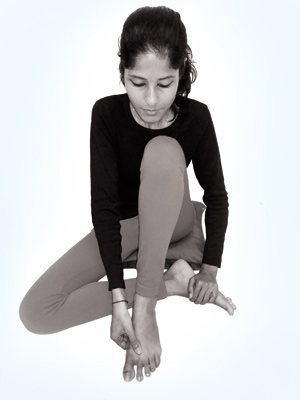 Massages for pain relief
Massages for pain relief
These simple massages of acupressure points are useful for contending with everyday aches and pains. The first point is especially well known for helping to alleviate face and tooth pain. But it can also be used for headaches, or pain associated with a bout of indigestion. The second point is especially useful for headaches, depression and menstrual pain.
- Massage the place in the webbing of your index finger and thumb. Apply a squeezing action and massage for about one to two minutes in little circles.
- Next, massage the area where the bones of your big and second toe meet. Use your index finger or thumb. Massage for about one to two minutes in little circles on each foot.
2. 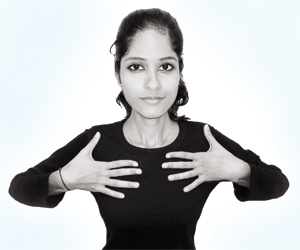 Massage for better breathing
Massage for better breathing
This self massage will help release tension in the chest and free up breathing muscles. It can also help strengthen and revitalize the lungs.
- Use the tips of all of your fingers to quickly tap the upper front ribs, beneath your collar bones, as you take a deep breath in through your nose.
- Exhale through your mouth and use your whole flat hand to slap the ribs as if you are helping to push the air out. Repeat three to five times.
- Repeat this technique on the lower front ribs.
- Next, make fists with your hands and massage the kidney area with your knuckles—just under the ribs in the back—briskly for about one minute.
3. 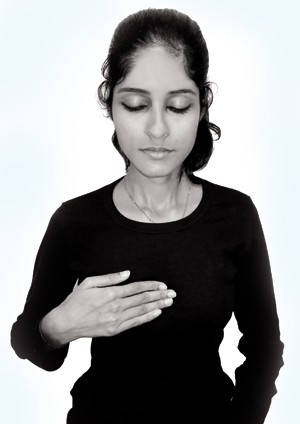 Massage to relieve anxiety
Massage to relieve anxiety
- Lightly tap the point between your eyebrows, also known as the third eye. You can also try gently massaging this point for about one minute while taking deep breaths.
- Another great point to relieve anxiety is at the centre of your sternum [the flat bone at the front centre of the chest], where you’ll feel a little depression in the bone. Give this area a gentle tap or a circular massage as you breathe deeply for about one minute. Then rest, breathe and notice how you feel.
4. 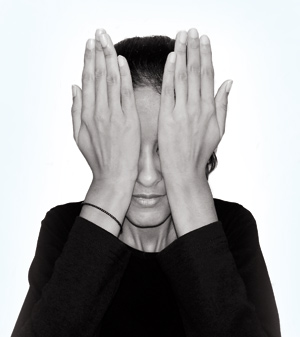 Massage to combat computer strain
Massage to combat computer strain
If you spend a lot of time in front of a computer, you know that even though you are sitting still, your body is under a lot of strain. The good news is that this simple self-massage can help.
- Begin by rubbing your hands together to warm them. Place your warm palms over your eyes and take a deep breath. Repeat two to three times.
- Use your right hand to rhythmically squeeze and twist your left shoulder.
- Next, squeeze your upper arm and continue this action down to your wrist and hand. Repeat two to three times. Spend extra time squeezing your wrist.
- Now squeeze and twist each finger.
- Place your right thumb in the centre of the outer crease of your left wrist. With firm pressure slide your thumb up your forearm to your elbow. Repeat this stroke several times.
- Use the same action on the inside of your forearm.
- Repeat the sequence on the right side.
- Next, makes fists with your hands. Lean forward and vigorously rub the lower back with your knuckles. Continue for at least one minute.
5. 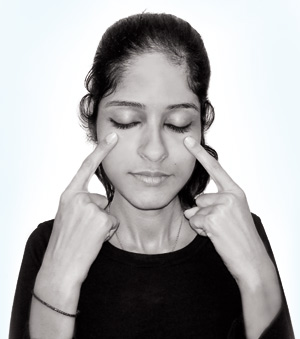 Massage for eyestrain
Massage for eyestrain
Eyestrain is especially common in computer users and others who do close work, like sewing or knitting. Here are some self-massage techniques that can help. Use this sequence to supplement simple focus breaks and bring more energy and relief to the eye area.
- Begin by rubbing your hands together briskly until they are warm. Place your warm hands over your closed eyes and take two deep breaths.
- Next, place your index fingers on the centre of the cheekbone, just below your pupil. Massage this area with tiny circles for one to two minutes. Take a few deep breaths.
- Next, use your thumb to massage the area where the bones of the big and second toe meet for one to two minutes. You will feel a “zingy” nervy sensation when you find the point.
- Repeat on your left foot.
6.  Massage for cramps [especially leg cramps]
Massage for cramps [especially leg cramps]
Some people get legs cramps during the day after a long walk or a lot of exercise, and sometimes leg cramps creep up in the middle of the night, seemingly for no reason at all. If cramps are a frequent or recurrent problem, seek medical attention. For an occasional cramp, try this simple acupressure point.
- Massage the space just above your upper lip, in a gentle, circular motion for about one minute. Or try holding this point, or lightly tapping it for several seconds.
- Take several deep breaths.
- If this point doesn’t relieve the cramp, try massaging and stretching the muscle itself.
7. 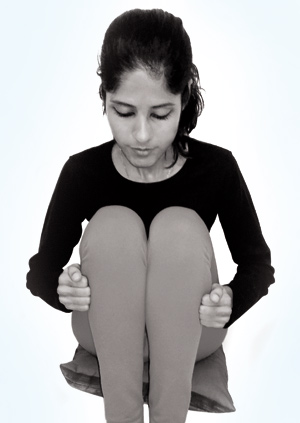 Massage to improve energy
Massage to improve energy
Afternoon fatigue can interfere with work and make life less enjoyable in general. These self- massage techniques can help overcome that tiredness. Just make sure you use them before you get too tired!
- Sitting in a chair, or standing, make fists and place your knuckles on your lower back. Vigorously rub the area for one to two minutes.
- Next, place your knuckles on the “Three Mile Point”. The ancient Chinese people believed that if you rubbed this area, you could walk three more miles! It’s just below your kneecap on the outside of your shinbone on each leg. Scrub this area with your knuckles, briskly, up and down for about one minute.
8. Final deep relaxation
If you have time, it’s great to end your self-massage session with deep relaxation. Relaxing after self-massage can help the techniques you’ve used to work better.
- Lie on your back on the floor, or even a couch, and close your eyes.
- Make sure you are warm and comfortable.
- Then begin breathing deeply and progressively relaxing each part of your body, from your feet to your head.
Self-massage is natural, powerful, free and enjoyable. The few minutes it takes to care for your body is time well spent. These techniques, along with other supportive measures like the use back flower remedies, can help you feel better and also alleviate your anxiety.
You will feel better, have less pain and discomfort and more energy to pursue the things you love in life. Enjoy!
- Model: Joycelin Sequeira
